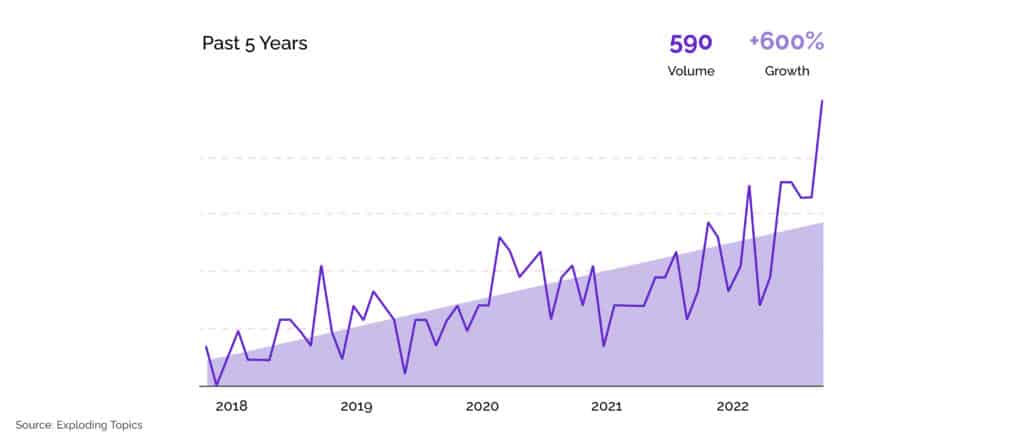If you want to extend the reach of your brand or business, you need to create a constant stream of content.
And it can’t just be any old content. You need to produce content that caters to your digital strategy, fits within your niche, and resonates with your audience. And yeah, it has to be high quality—engaging writing, well-researched, beautifully designed.
It’s no wonder digital creators and thought leaders struggle to come up with enough content to post on a regular basis.
But don’t worry. We’ve got the solution, and it’s called content recycling.
But what’s that?
Content recycling is a marketing strategy that includes reposting or re-sharing previously posted content. Additionally, content recycling allows companies to reuse a specific piece of content and find another angle or reason to share it with their followers. This expands their reach without the necessity of creating all-new content.
In a digital environment where you must produce a constant stream of posts to reach your audience, it’s best to apply the strategies you normally reserve for aluminum cans and empty milk cartons—reduce, reuse, repurpose and recycle.
- Reduce the fluff and filler that comes from writing something new for the sake of something new.
- Reuse strategies that work—create templates and outlines that you can reuse easily and efficiently.
- Repurpose content or pieces of content in a new way—add a new twist, update, or context.
- Recycle your strongest pieces. In many cases, this can be done with minimal changes—sometimes without any changes at all.
Yes, those four Rs can transform your digital marketing strategy and help you meet your goals for growth. It doesn’t matter what niche you work within. This strategy can apply to your personal accounts, brand accounts, and even company messaging.
It’s a myth that you have to create something new every time you post. And those who attempt to end up wasting time, battling writer’s block, and settling for subpar for the sake of new.
Let us bust this myth and show you why you can reduce, reuse and recycle your content and grow a following at the same time.
How content strategy has changed over time
When social media platforms first began in the late 2000s, it was easy to create a presence on the web, thanks to simple math. Fewer users equaled less competition, which made it easier for you to reach new people. In the beginning, when platforms used chronological feeds, it was considered taboo to post multiple times a day. Your followers would see every post and feel bombarded.
Now, most platforms have upwards of a billion users. In 2021, Facebook had 2.9 billion monthly active users, and Instagram had around 1 billion. That exponentially increases the number of people you are competing with for a share of voice. With interest-based algorithms that feed you content based upon your previous interactions, it’s even harder to be seen or heard on a platform. Most digital media strategists recommend multiple forms of interaction and content each day, increasing the amount of content you must produce to reach people.
There’s more pressure to create shareable content now than ever before. And even if you painstakingly create something completely new for each post, there’s always a chance your audience won’t see your content due to the sheer volume of content being posted each day.
Instead of wasting time creating something completely original each time you post, save yourself some time and try content recycling.
This content reuse strategy will maximize the value of your initial work. It has become a key content marketing strategy for companies in all industries. In fact, the number of global searches for the keyword phrase “content repurposing” has increased 600% in the last five years. Researchers expect this trend to only continue growing as keyphrases like “targeted advertising” decline in global search popularity.
These trends do not mean that one type of marketing or advertising strategy is more beneficial than another. However, it does show how marketers are pivoting their plans as the internet becomes more saturated.
In other words, this spike indicates that more businesses are working smarter, not harder, in 2023.

Here’s how you can too.
How to make your content work smarter, not harder
Let’s say you’re the CEO of a tech company, and you want to grow your following as a thought leader on LinkedIn and Twitter (or maybe you’re the marketing team member behind the scenes doing the content strategy and ghostwriting on behalf of the CEO). To reach your audience, you need content (you know this) that you can deliver regularly.
A solid cadence—days of the week you post certain types of content—will help you build trust with your audience. You construct your content strategy, write several pieces, create designs, optimize with SEO keywords—and then… you get writer’s block.
Your newest piece isn’t coming together, and the more you work on it, the more it feels like fluff.
It’s time to Reduce—the fluff and the stress. You don’t need to create new articles, posts, or even images out of thin air.
Yes, you want to keep a creator mentality—don’t set that aside completely—but now that you have strong B2B content that fits within your strategy, see how you can Reuse elements from previous posts, Repurpose copy, audio, video, or images in new ways, or even recycle content altogether.
Here’s an example. If you were a guest speaker on a podcast, you could reuse that content in multiple ways:
- Create an audiogram with a 30-second to one-minute podcast clip and share it on Instagram, Twitter, Facebook, and LinkedIn.
- Pull a single quote from that audiogram and share it on Twitter. Then, screenshot the tweet and share it on Facebook and LinkedIn.
- Write a blog or a LinkedIn article about your experience on the podcast, and pull quotes from the content to include in your write-up. Share the article on your other social profiles.
- Use a behind-the-scenes photo to tell people about the podcast and share the link to listen.
- Embed the podcast in a blog on your website.
That’s five ways to reuse a single podcast that probably took you, at most, two hours to participate in. The goal is to reduce the amount of time you spend on each piece of content so that you can maximize efficiency. The best way to do this is to think strategically and creatively about the content you already have. Whenever you have a new podcast opportunity, speaking engagement, press coverage, blog post, or successful social media post—look for the ways you can repurpose that interaction to create more content online.
Related post: 10 Ways To Repurpose Your Content for Maximum Output
That may look like chopping a blog into multiple shorter social media posts, sharing a post from a few months ago and commenting on it, updating an old blog with a part-2 perspective, or sharing press coverage in your newsletter.
It may also look like saving an outline from a blog that came together really well and reusing the structure for a different but similar topic, reusing the same image cropped in a different way or with a different color scheme, or creating templates from older content to make putting together future posts quicker and easier.
It may also mean recycling old blog posts without any alteration and reposting them.
The options are endless.
And here’s a secret: thanks to the way algorithms work across platforms, you can post something twice—with time in between—and few people will notice that you’ve recycled the same quote or image. Look through your existing posts and see which ones performed best. Then, repost and repurpose with an updated caption to engage with your readers.
How to curate existing content from other sources
Now that you’re thinking about how to make the most out of your own content, consider how those same strategies can apply to curating content.
If you’re a thought leader or industry expert, chances are that you spend a considerable amount of time reading articles and posts, watching videos, and listening to podcasts about your industry. Guess what? You can double the impact of this research by curating articles and posts to share on your channels.
Here are the 10 commandments of curating content to share online:
- Stay within your niche. If you’re a thought leader in the tech space, you probably don’t need to talk about fashion.
- Share reputable content. Always vet your sources before clicking to share.
- Provide links. This boosts your engagement rates and gives your followers the opportunity to learn more.
- Tag relevant people. If you’re sharing an article, tag the writer or the platform to extend the reach of your post and credit the content creator.
- Use a variety of formats. Share videos, audio clips, links, and photos.
- Put your own spin on a trend. If you’re using Instagram to reach readers, consider posting a meme or a Reel tailored to your niche.
- Add your two cents. Make your content more engaging by sharing your take on an article or another person’s post.
- Interact with others. If you like the content someone else is sharing, interact with it and make sure to tag them when you share their posts.
- Encourage interaction. If you’re sharing your take on an article, ask your followers to comment with their opinion too.
- Remember the rules. Don’t share pictures you don’t have the rights to share, and make sure you always appropriately credit people.
Incorporating shared content into your digital strategy can help you extend your reach, and it is an easy and effective way to post something daily.
Related post: 3 Critical Content Marketing Tactics that Actually Drive Leads for B2B Tech Companies
How to crowdsource to produce more content
One other easy way to optimize your content is to crowdsource from your followers, your colleagues, and others in your industry. Ask questions and share responses. Within the context of B2B brand marketing, this process is often called “user-generated content,” and, especially for B2C companies, it tends to include images of customers using the brand’s products.
User-generated content looks a little different for thought leaders and companies selling intangible services or products that can’t be held or used visually. If you’re promoting ideas or services instead of products, user-generated content will look different. It could be a screenshot or text image of someone’s response to your tweet or a testimonial from someone who has used your service or solution.
Get creative in how you interact with your audience and see if you can reuse those interactions—from Q&As during a live stream to clever comments on your blog posts—into more content for your social channels.
You don’t have to create something new every day to grow your audience and impact your industry. Leverage your content and get creative. Reducing, reusing, repurposing, and recycling your content will help you interact with your audience on a daily basis, solidify your brand voice, and execute your marketing strategy in a truly cohesive way.
And hey, if you don’t want to do all this work yourself, get in touch with us—we’ve got plenty of expertise in reducing, reusing, repurposing, and recycling work to create killer recycle marketing strategies.





